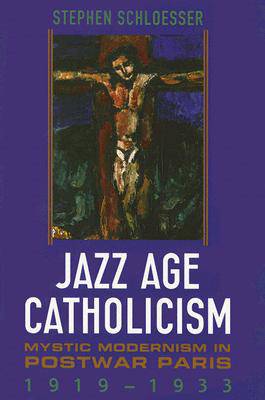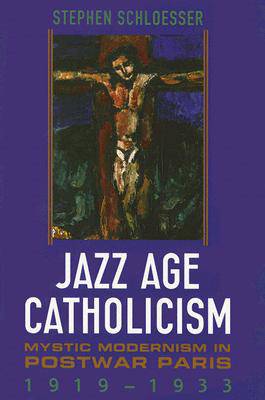
- Retrait gratuit dans votre magasin Club
- 7.000.000 titres dans notre catalogue
- Payer en toute sécurité
- Toujours un magasin près de chez vous
- Retrait gratuit dans votre magasin Club
- 7.000.000 titres dans notre catalogue
- Payer en toute sécurité
- Toujours un magasin près de chez vous
Jazz Age Catholicism
Mystic Modernism in Postwar Paris, 1919-1933
Stephen Schloesser
Livre relié | Anglais
121,95 €
+ 243 points
Description
Following the Great War's devastation, innovative movements in France offered competing visions of a revitalized national body and a new world order. One of these was the postwar Catholic revival or renouveau catholique. Since the church had historically been the dominant religious force in France, its turn of the century separation from the state was especially bitter. For many Catholics, the 1914-18 sacrifices made on the Republic's behalf necessitated its postwar 're-Christianization.' However, in their attempt to reconcile Catholicism with culture, revivalists needed to abandon old oppositions and adapt religion's rigging to the prevailing winds of modernity.
Stephen Schloesser's Jazz Age Catholicism shows how a postwar generation of Catholics refashioned traditional notions of sacramentalism in modern language and imagery. Jacques Maritain's philosophy, Georges Rouault's visual art, Georges Bernanos's fiction, and Charles Tournemire's music all reclothed ancient tropes in new fashions. By the late 1920s, the renouveau catholique had successfully positioned Catholic intellectual and cultural discourse at the very centre of elite French life. Its synthesis of Catholicism and culture would define the religiosity of many throughout Western Europe and the Americas into the 1960s.
Spécifications
Parties prenantes
- Auteur(s) :
- Editeur:
Contenu
- Nombre de pages :
- 440
- Langue:
- Anglais
Caractéristiques
- EAN:
- 9780802087188
- Date de parution :
- 01-05-05
- Format:
- Livre relié
- Format numérique:
- Genaaid
- Dimensions :
- 162 mm x 229 mm
- Poids :
- 802 g







